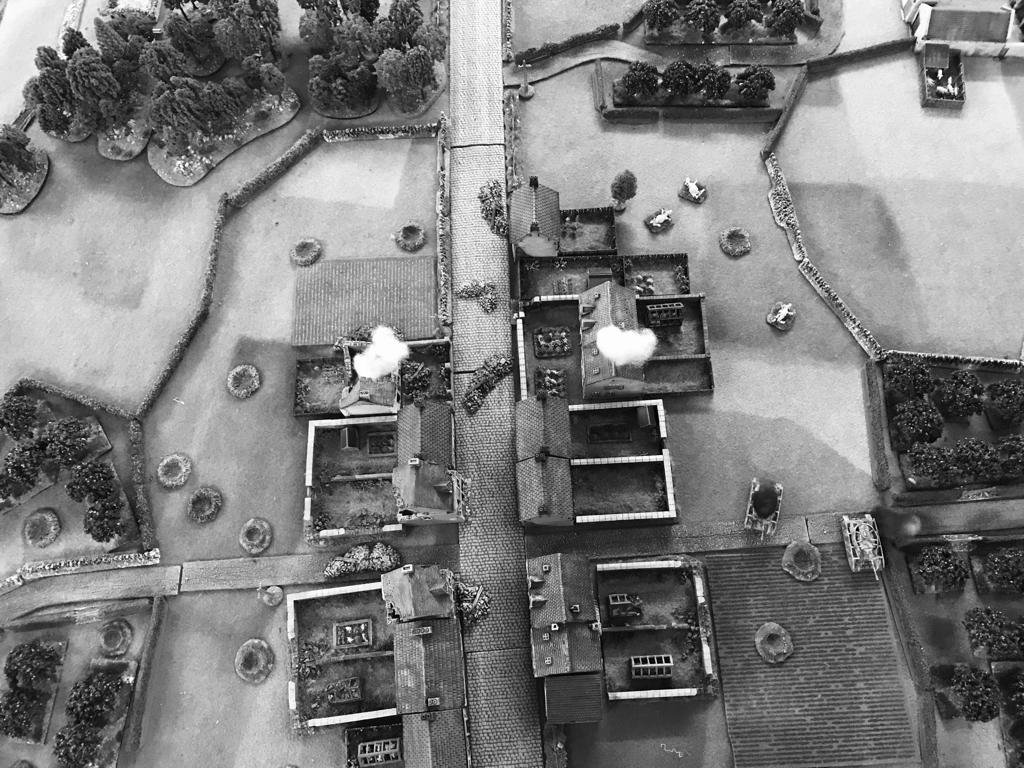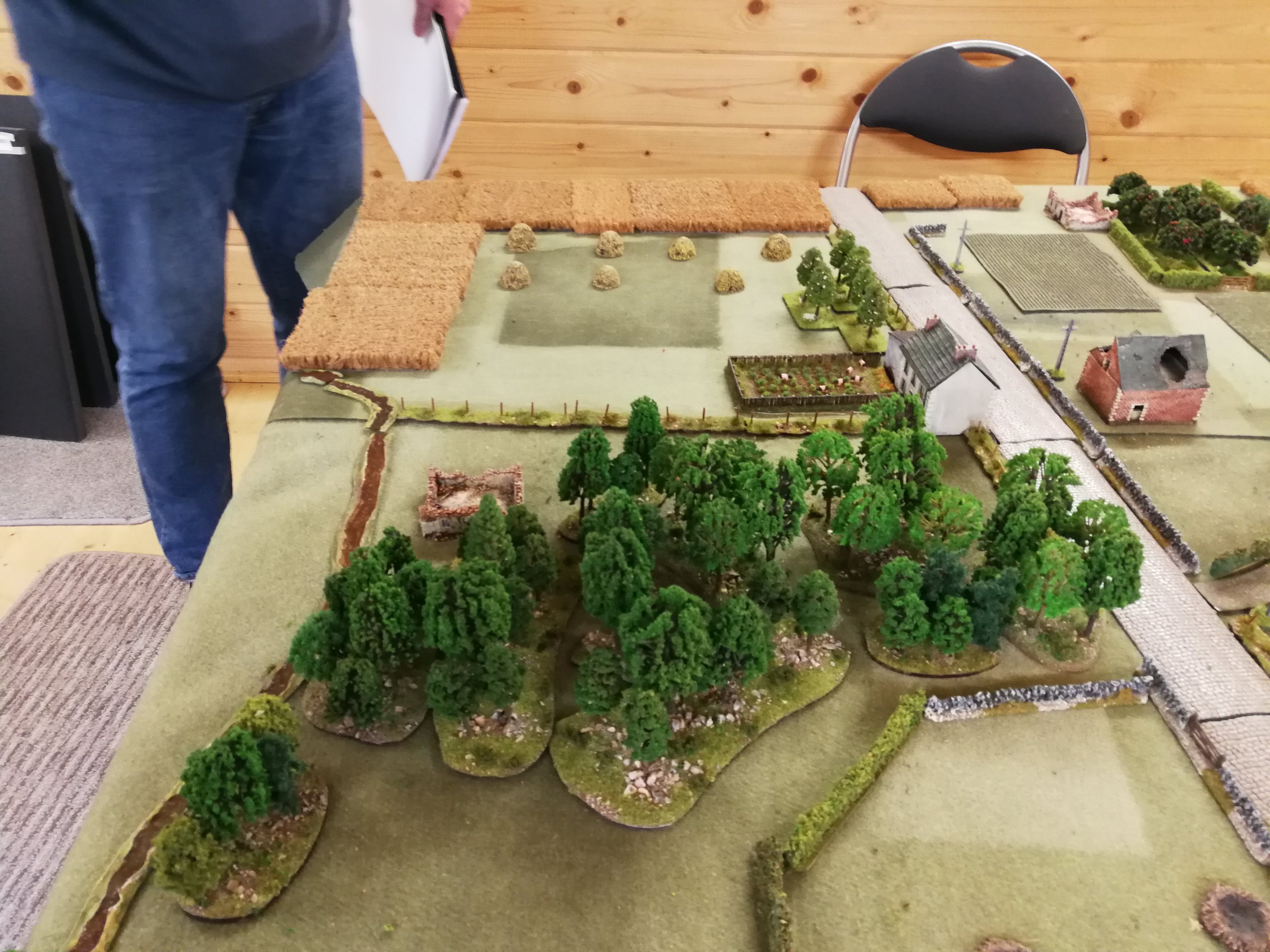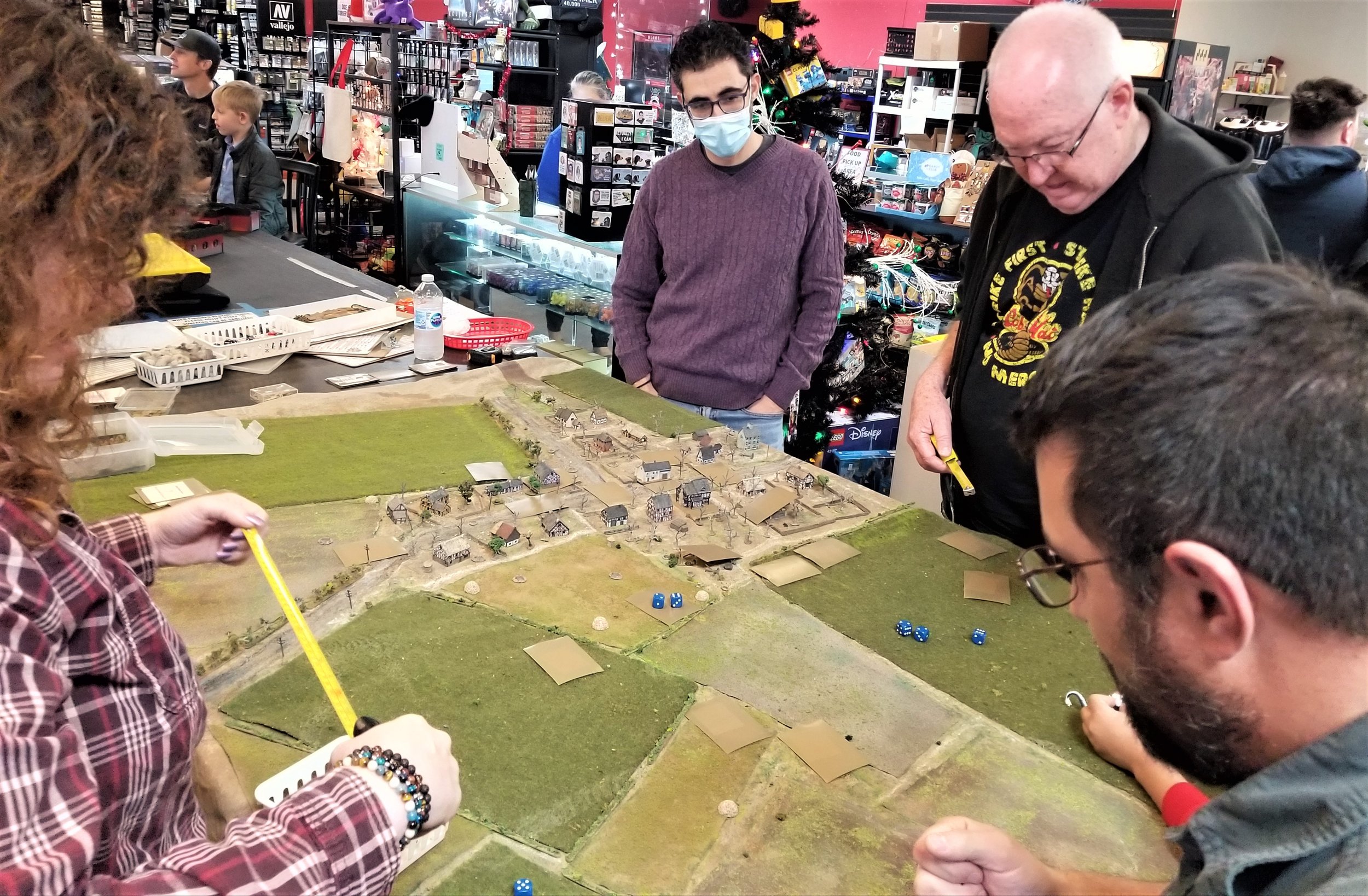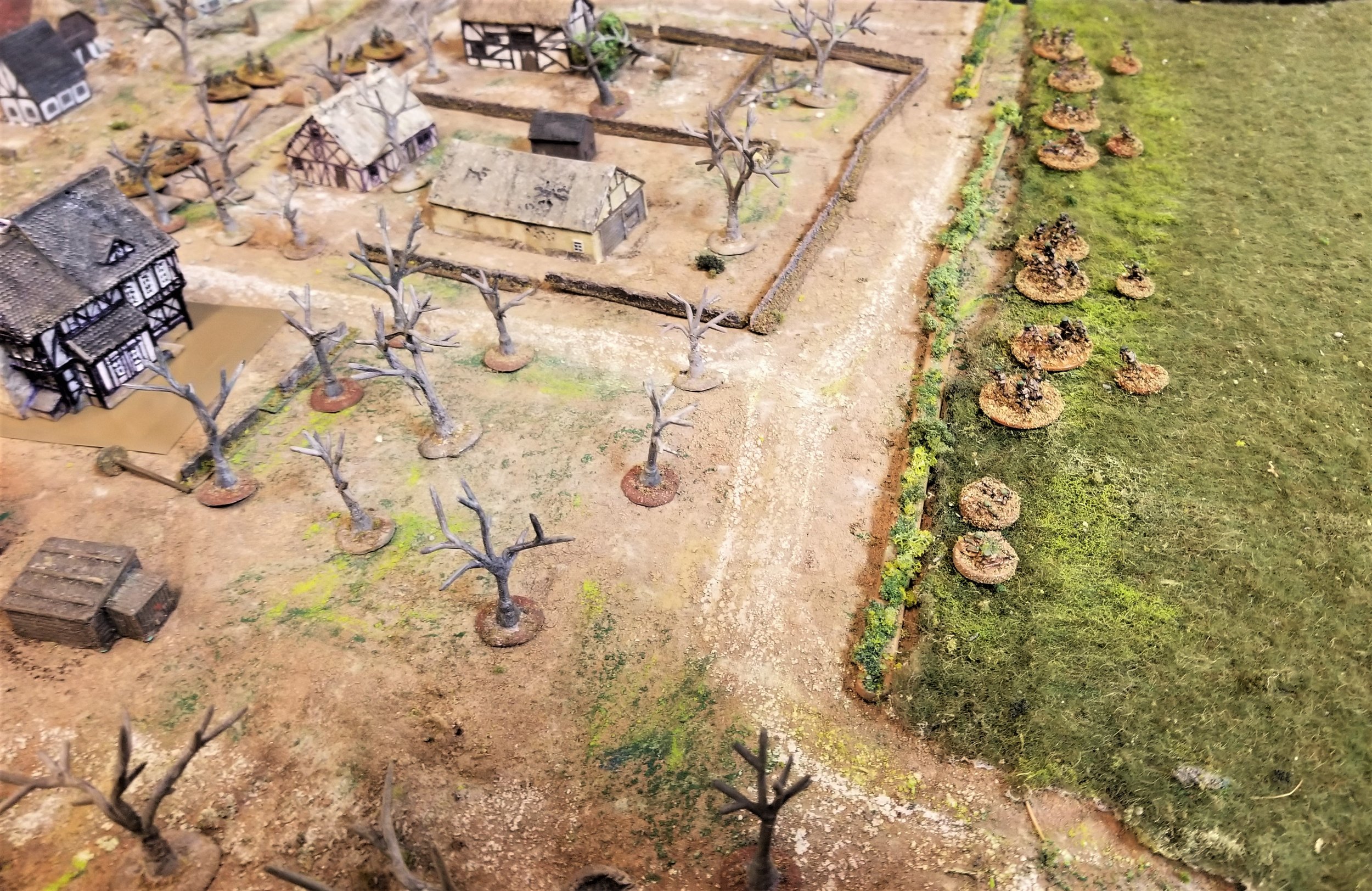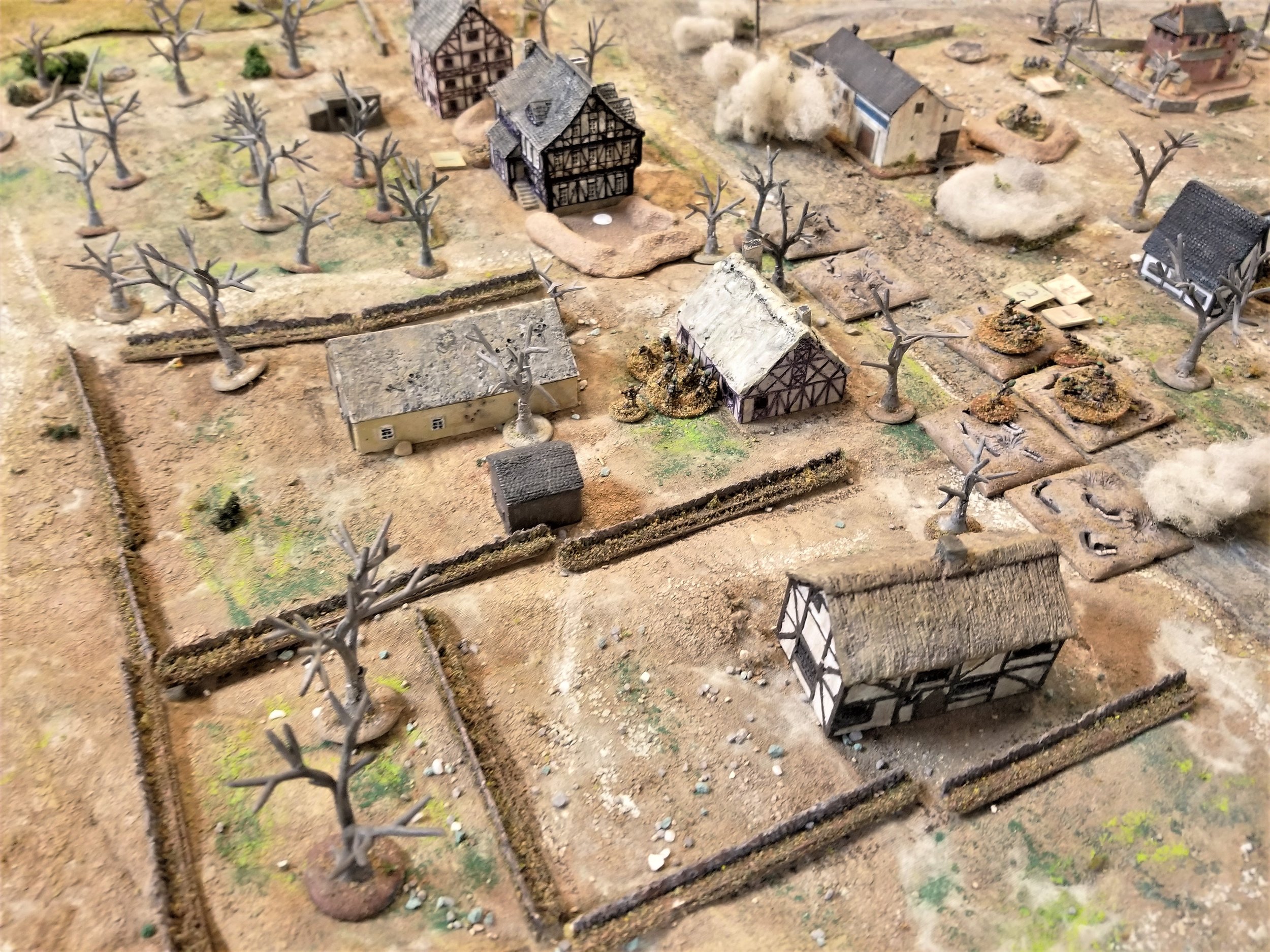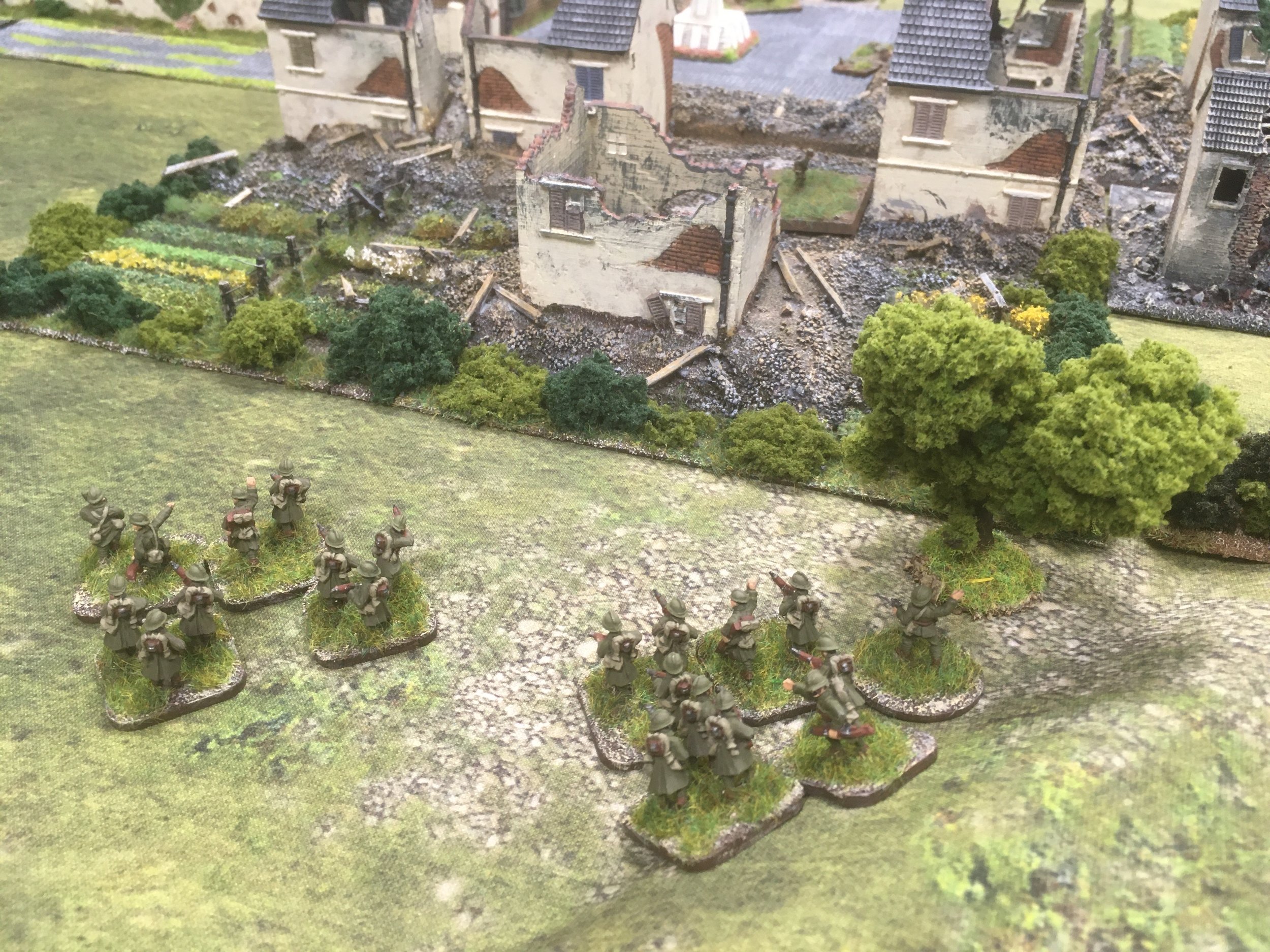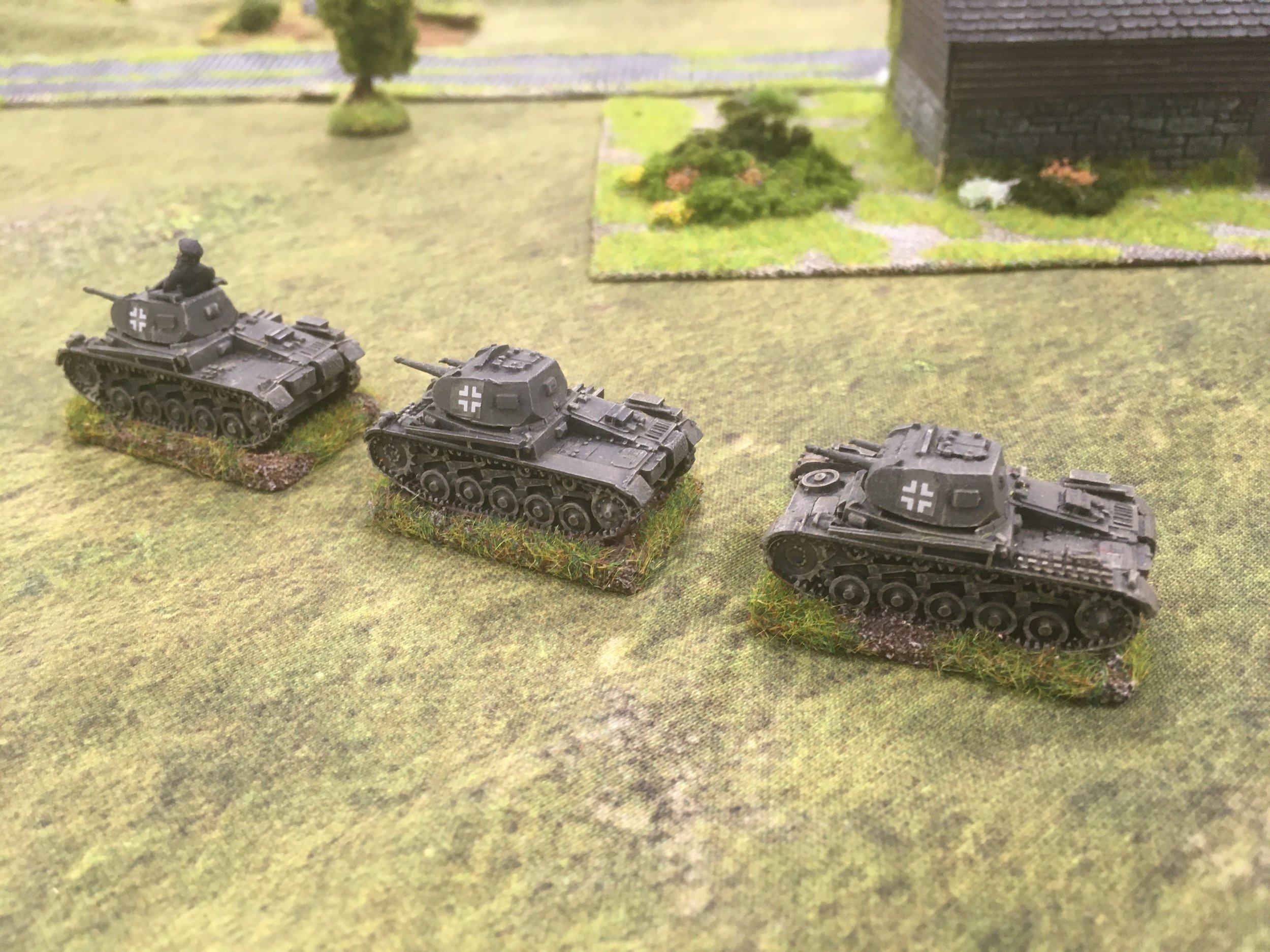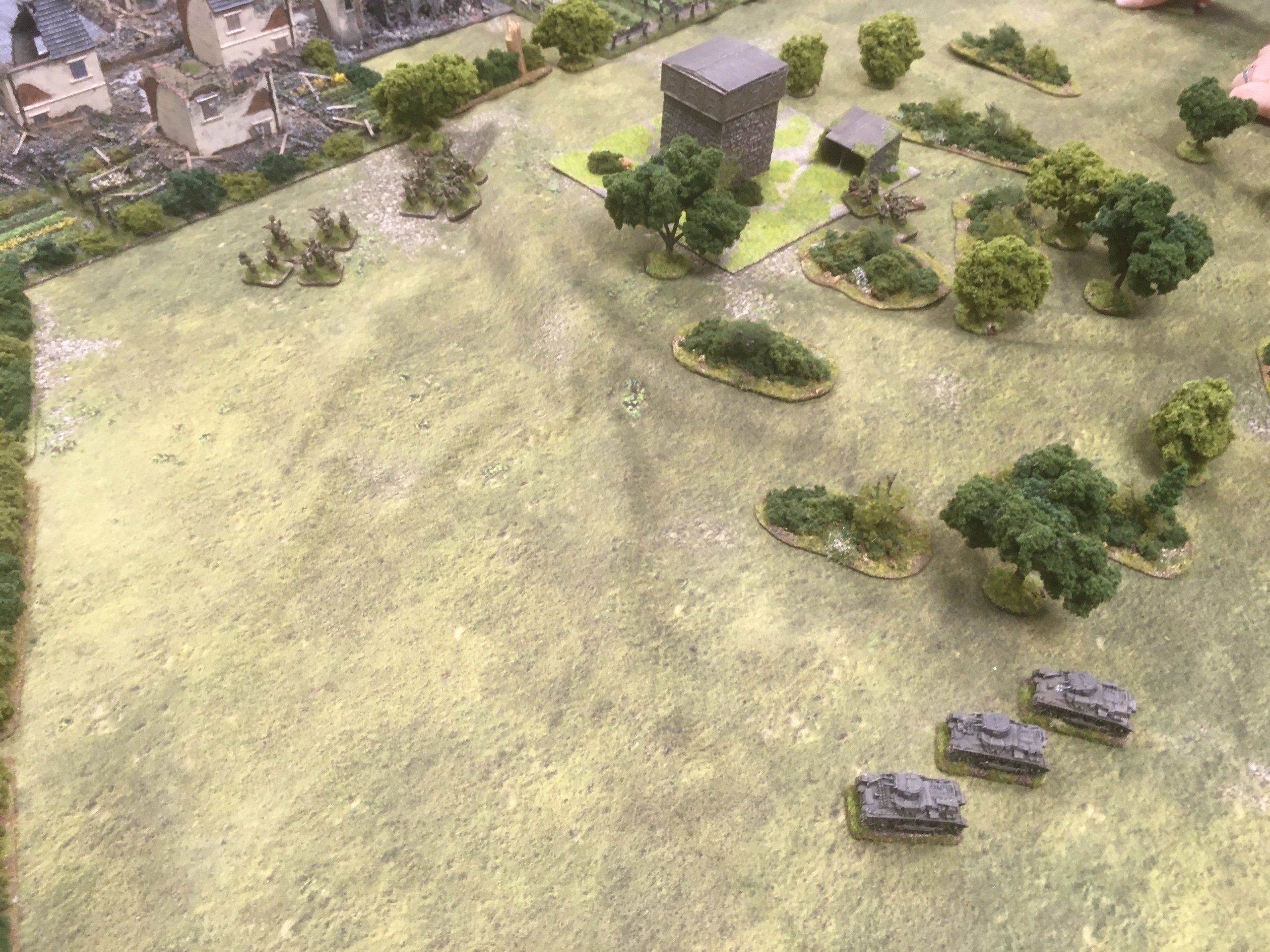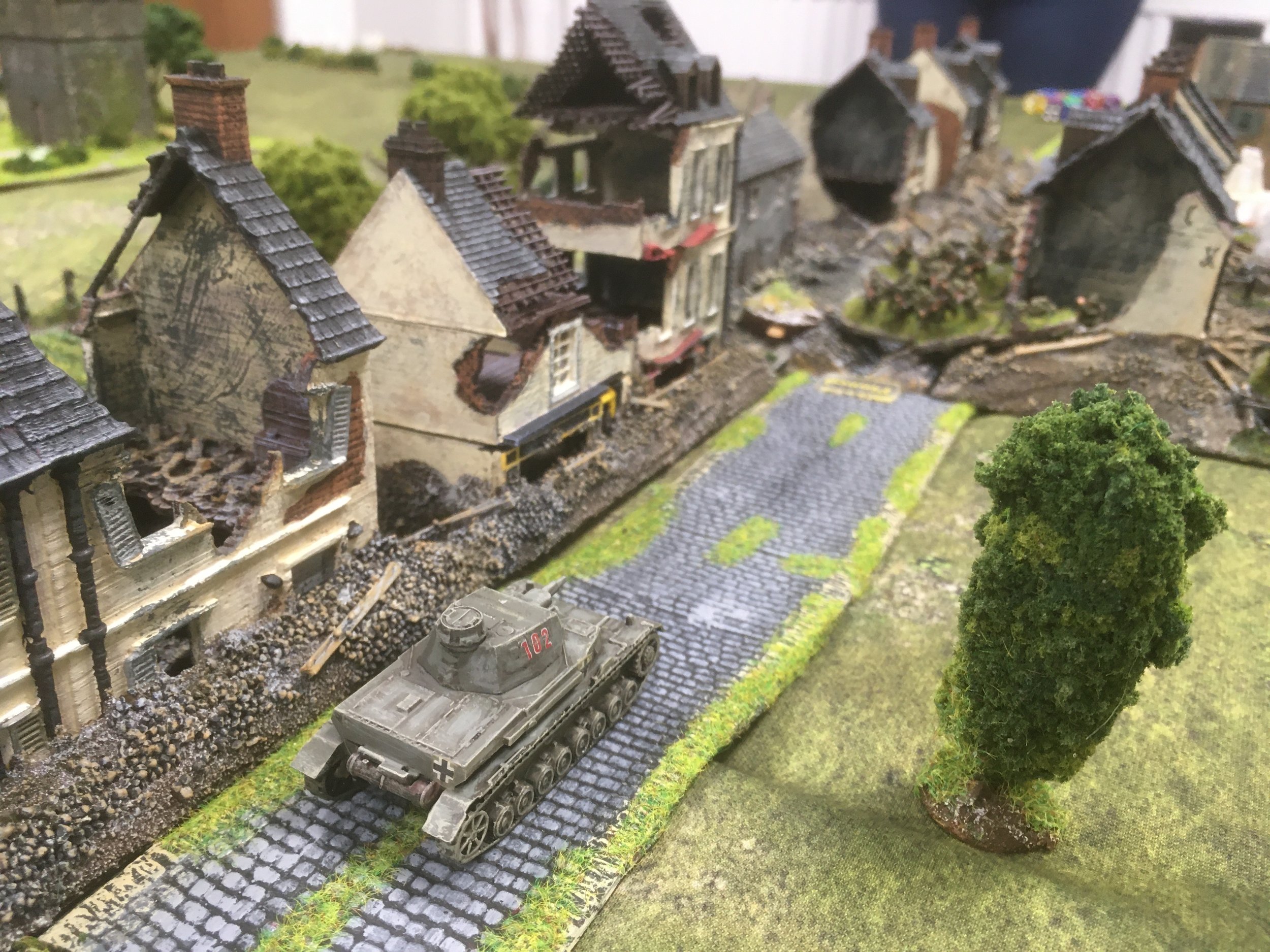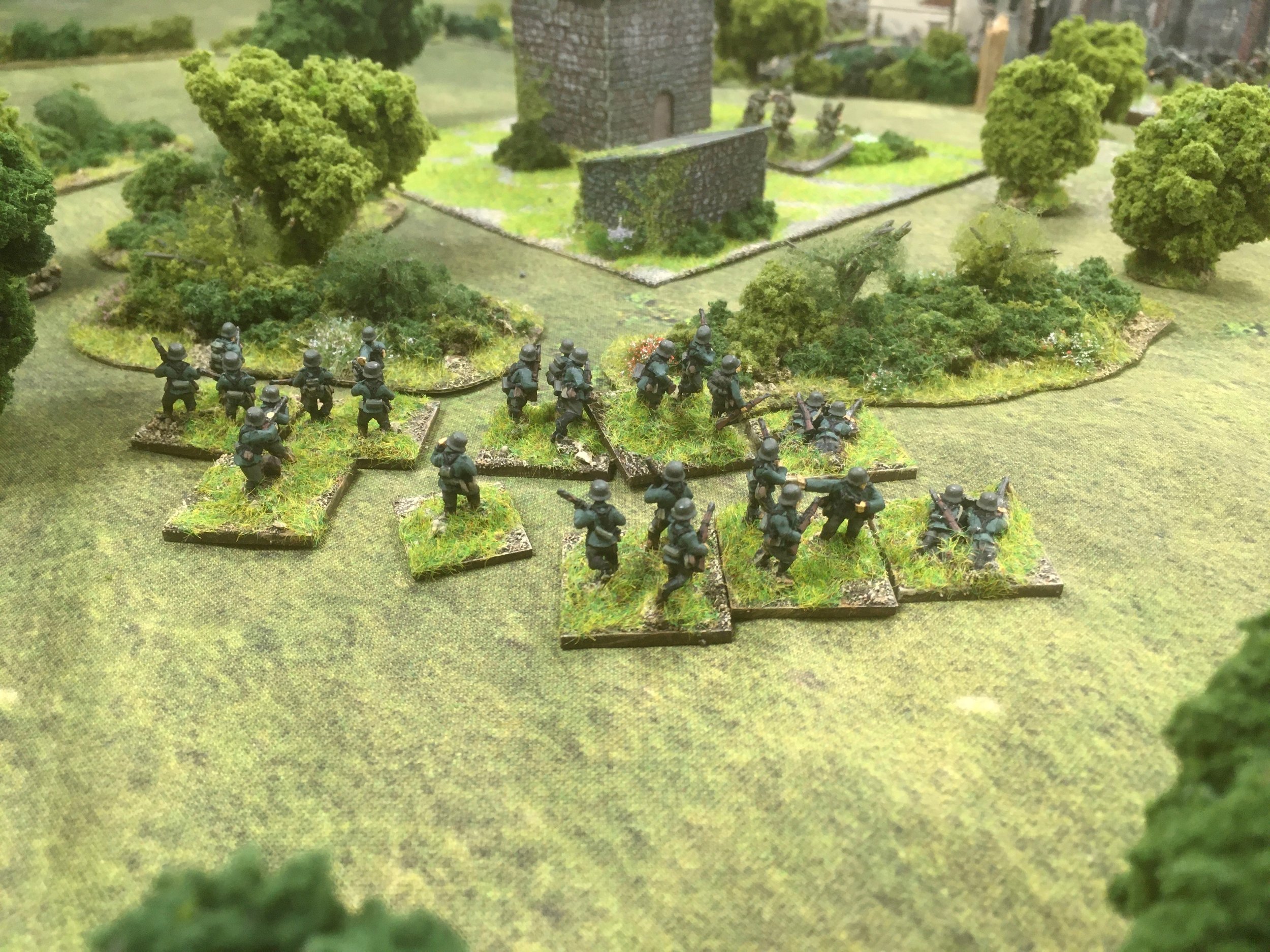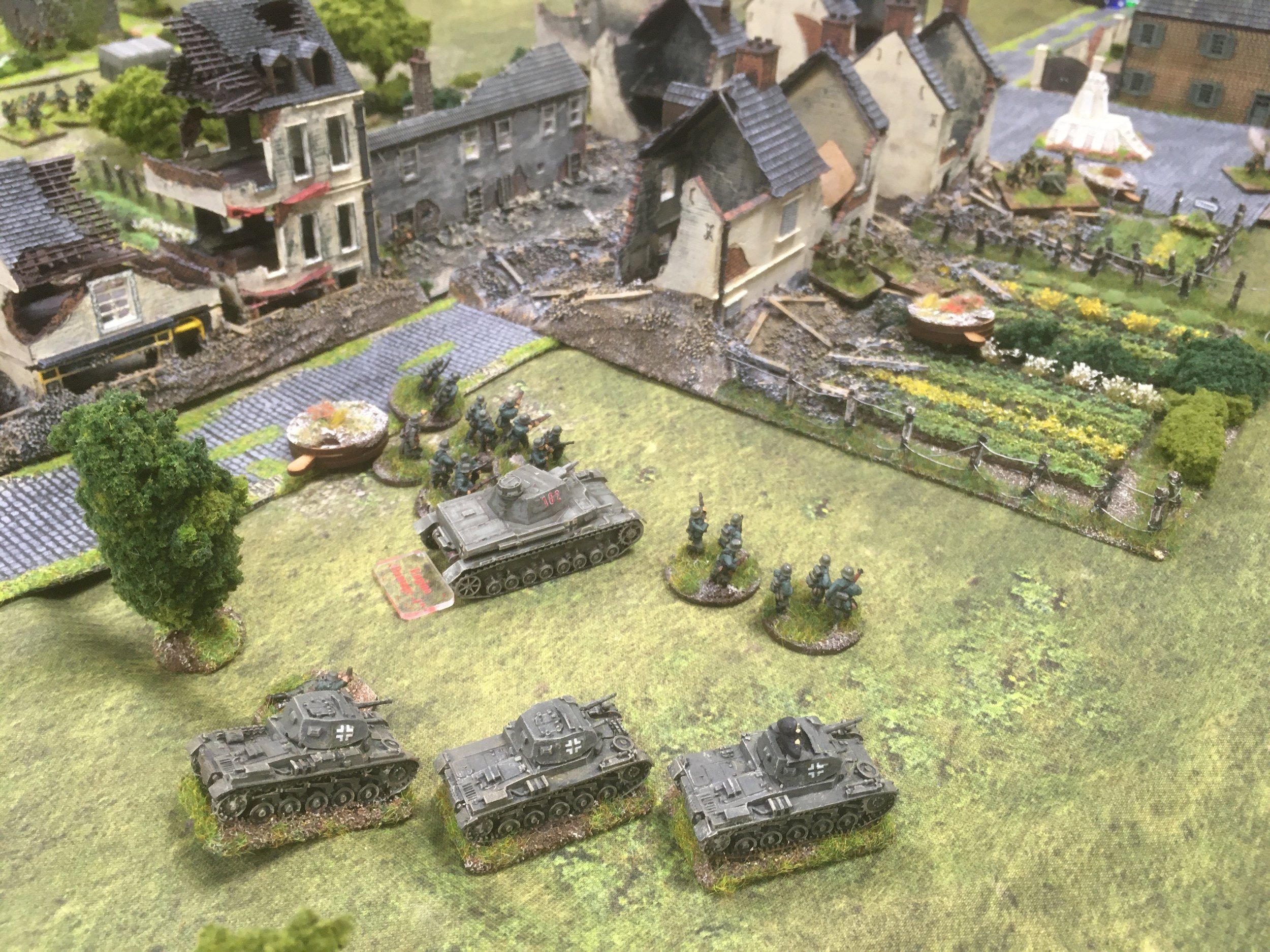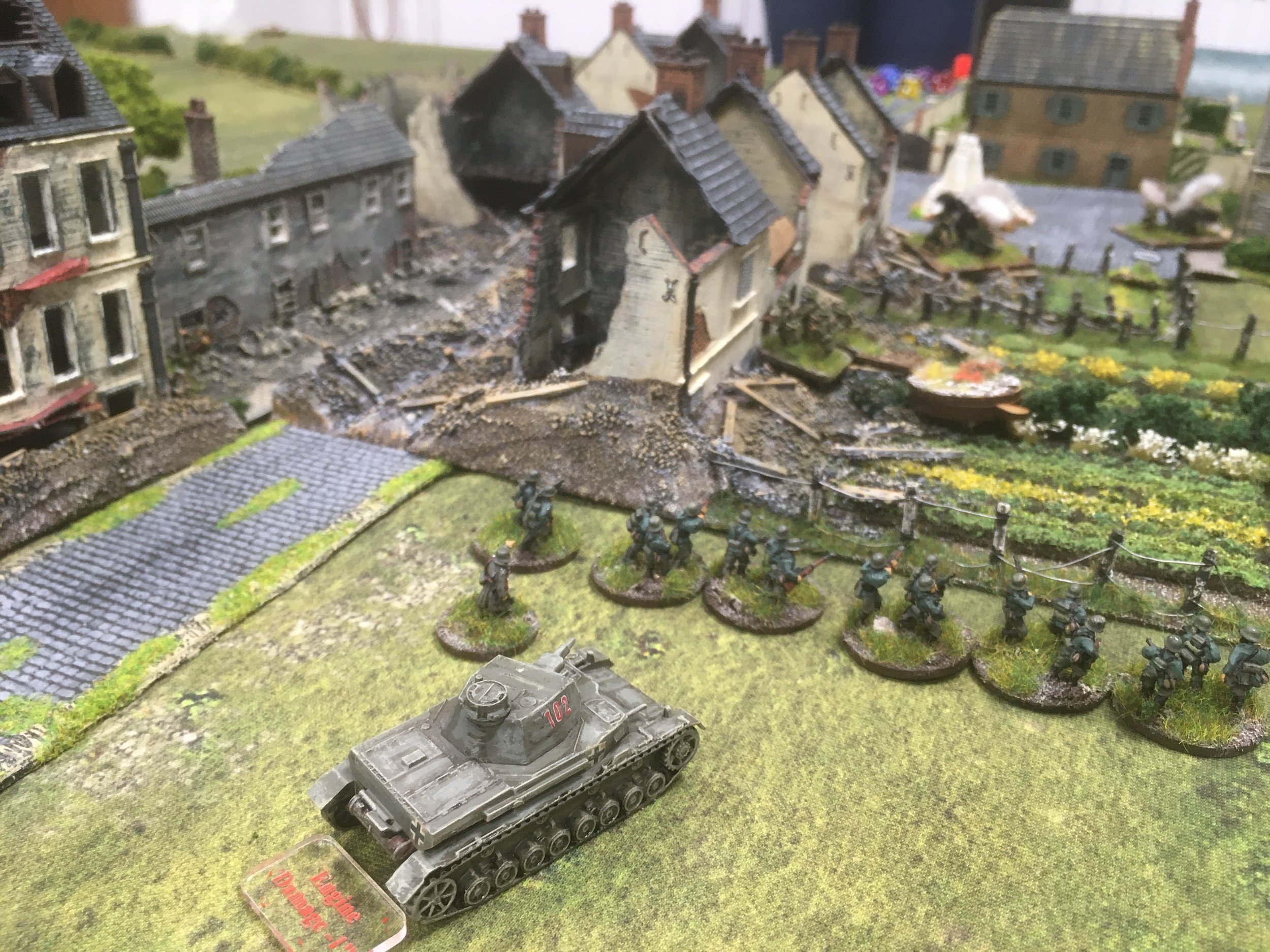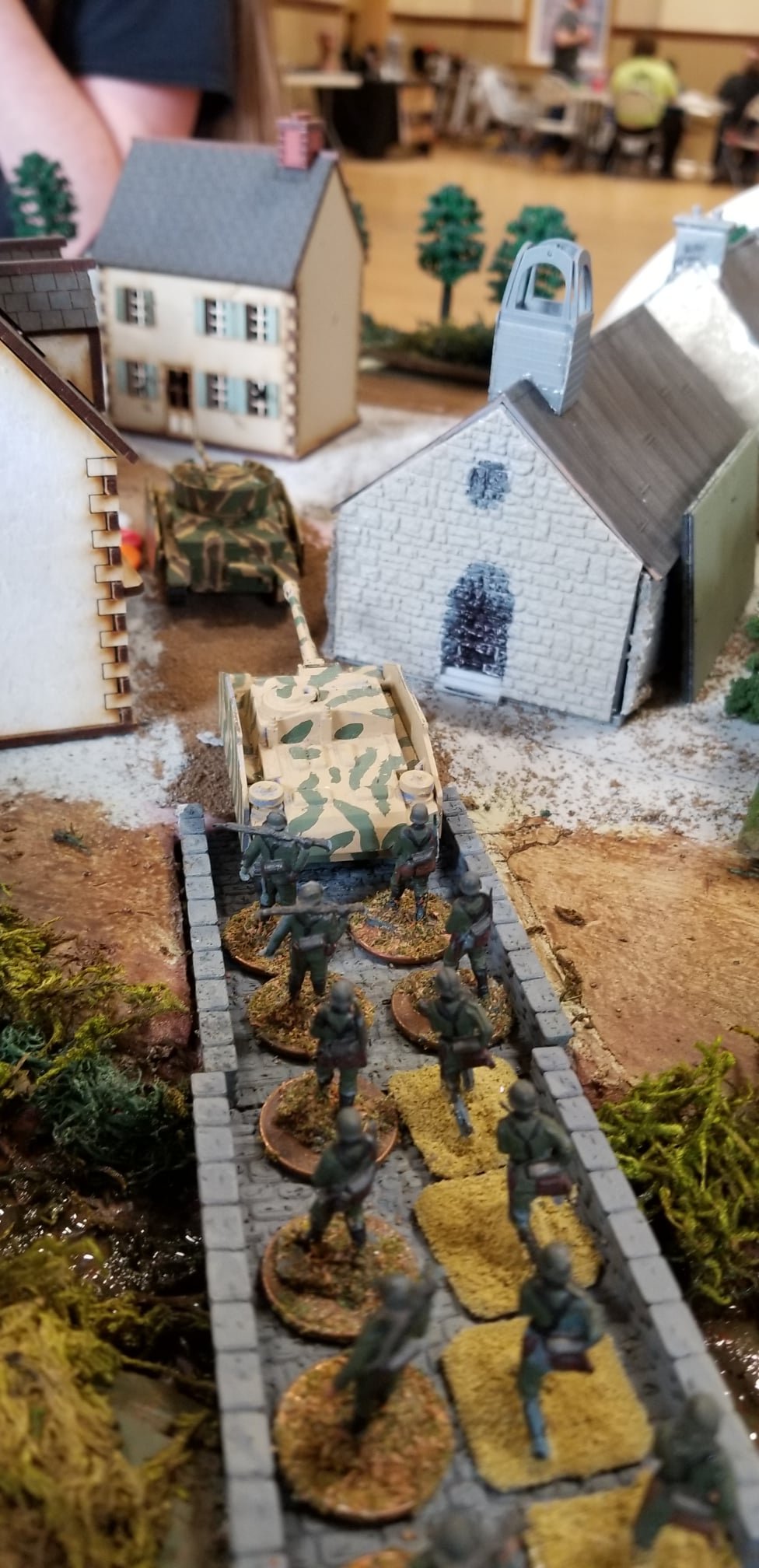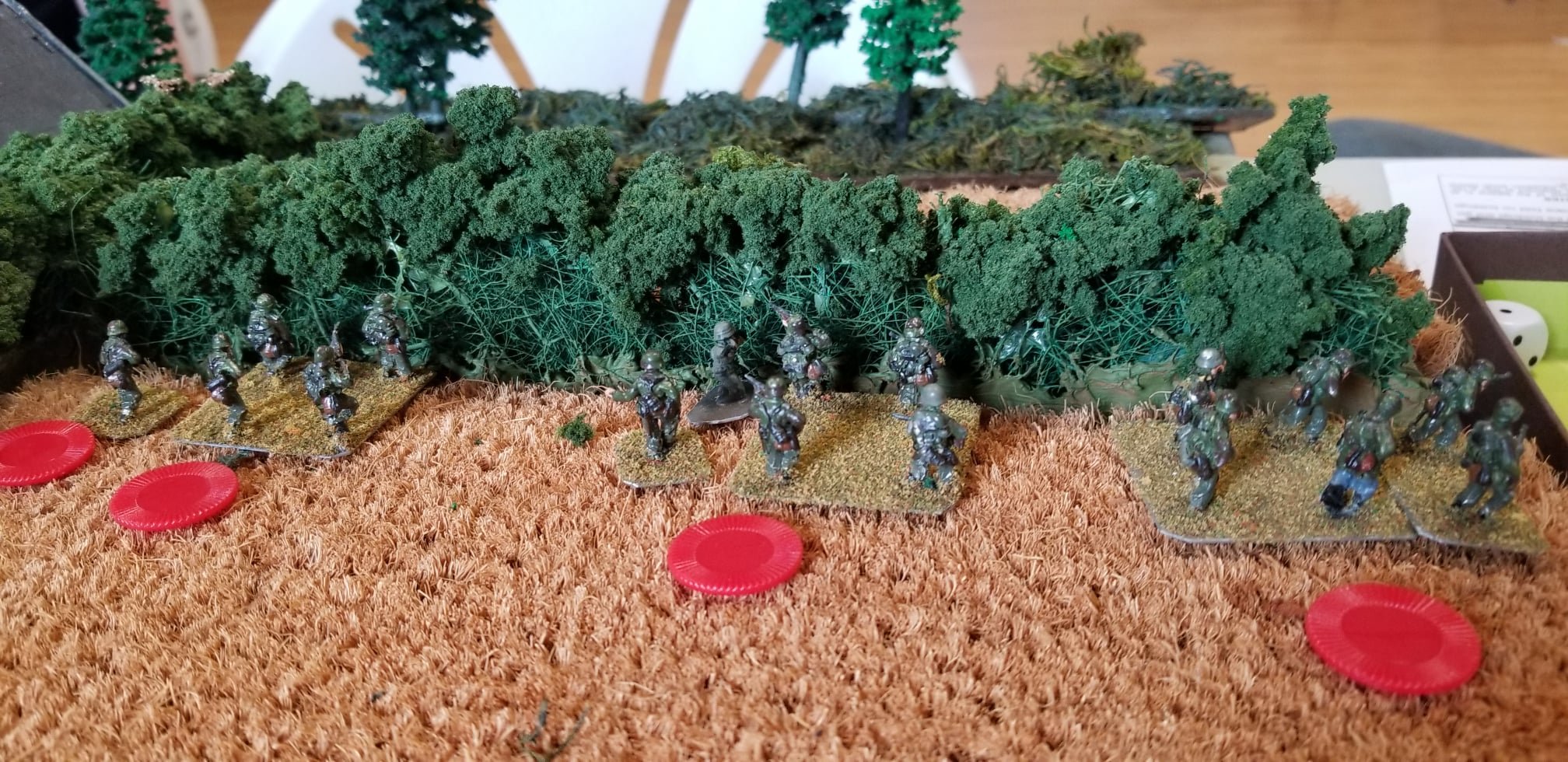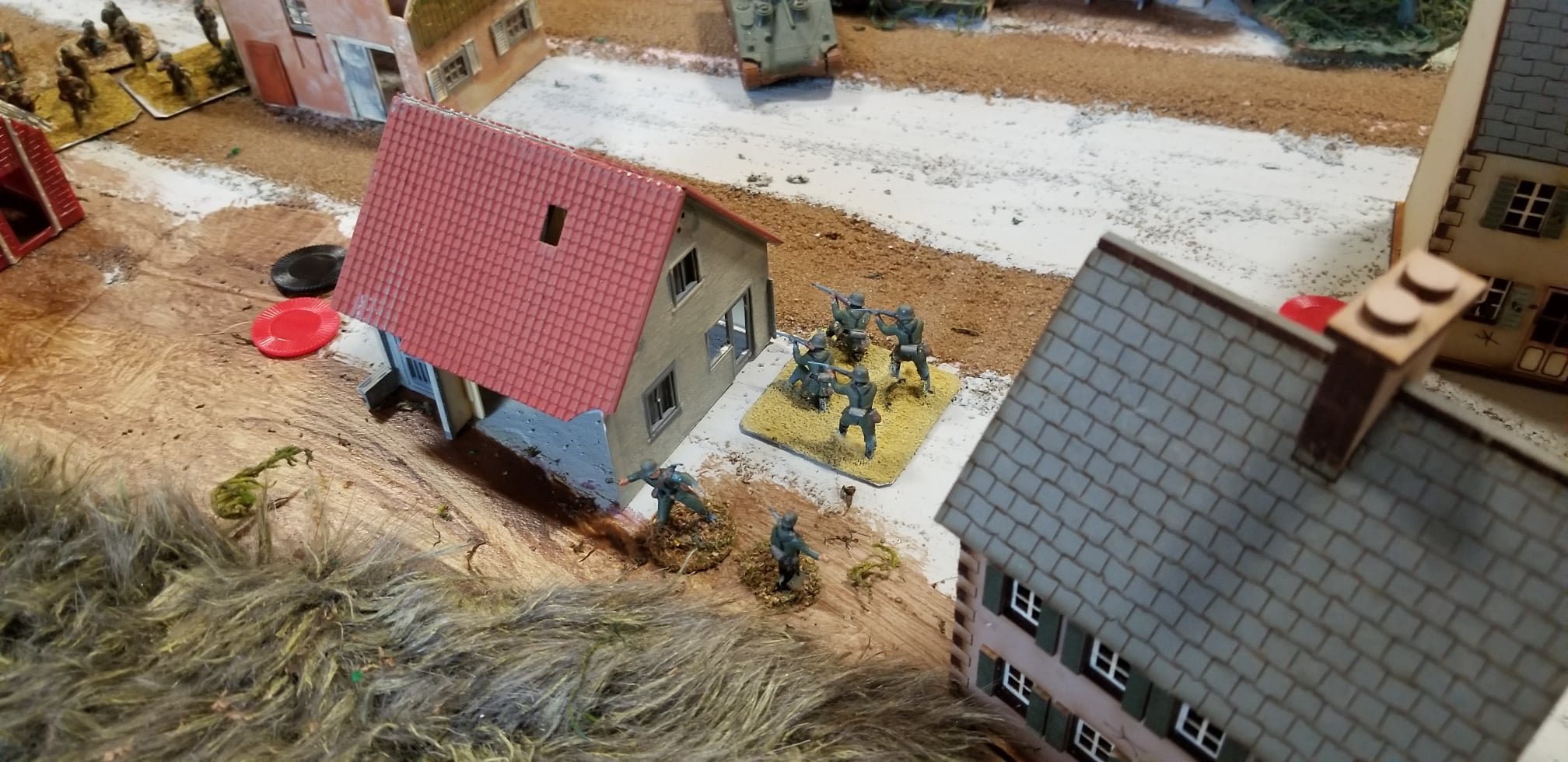The first I Ain’t Been Shot, Mum! game was quite well received and the group was eager for another action. One of the players requested more tanks, so I cast about a bit for another action and settled on the the French counterattack by SOMUA S-35s of the 3rd Light Mechanized Division against the panzers of the 3rd Panzer Division on the morning of May 13, 1940. The Panzers had pushed the French Dragoons out of Orp in the morning and were reported to be moving to Jandrain when the French launched the attack by the 1st Cuirassiers.
Google Earth is one of my favourite tools for generating realistic looking battlefields when good period maps are not available, especially for Europe, where many of the features will remain as they have for generations: the towns and roads get bigger, but much of the rest seems to be pretty much the same. For this game I zoomed in on the region between Orp and Jandrain and we used that as the basis for our table. The terrain in this area is largely flat farm land, and main feature of the terrain was the long line of woods surrounding a stream that ran to the east of the main north-south road between the towns.
The French forces consisted of 3 understrength platoons of SOMUA S-35 tanks and a platoon of motorcycle reconnaissance troops, led by the Company Captain, and two additional Big Men: a Lieutenant in one tank platoon, and a Sergeant in the motorcycle troops. Two Blinds started deployed on the road, with the rest entering on the French Blinds card.
The German forces consisted of a Light Panzer platoon (mixed Pz IIs and Pz Is), a Panzer II platoon, a Panzer III platoon, and a Panzer IV platoon. These were supported by a platoon of armoured cars and a platoon from the divisional anti-tank battalion with four PaK 36 anti-tank guns. The Germans also had a forward observer in a radio car with contact to a battery of 10.5 cm howitzers. Unbeknownst to the French, the Germans had been able to send some elements forward and establish positions. The Germans started with two Blinds on the road and had two groups deployed hidden on table, one in the woods east of the road and another in the woods along the west table edge. The German PzKw III and PzKw IV platoons had to be the last two Blinds onto the table and they unfortunately rolled the maximum for their number of dummy Blinds, providing them with more decoys than they needed and requiring them to fight longer with their light units against the superior French armour.
The game opened with each side sending Blinds forward to try and spot the enemy. With the flat terrain, sighting distances across the wide plain to the west of the road were quite long and the recon elements of both sides were revealed. The French motorcycles decided to bail off of the road before anything with guns started to light them up, and drove off toward the woods, where they forced the hidden unit there onto a Blind, but were unable to spot the units through the woods. The first unit of S-35s was soon revealed as well and opened fire on the lightly armoured SdKfz 222 armoured cars, brewing up one of them. The other promptly scooted away and began to try and move across the stream to provide sighting against any French movement up the east side of the battlefield.
The German units on the Blind discovered by the French reconnaissance platoon revealed themselves and opened up on the dismounted French motorcyclists. The hidden elements consisted of two PaK 36s with an attached Big Man and three PzKw IICs, and their combined fire pretty well crippled the recon troops. The squads began taking a lot of wounds, which in IABSM provide a negative penalty to movement and shooting. Since the troops were also in the woods, they suffered additional movement penalties, with the net effect that they could not move away from the withering fire and could only stand there and rack up wounds. Eventually I made a GM ruling that any section with more wounds than effectives was routed and dispersed/surrendered and pulled them from the table.
In the meantime, the French armour began to fire on the German ambushers, shooting off a well aimed shot each turn and advancing slowly forward. The PaKs and Pz IIs engaged the French armour but their shots just bounced off of the thick armour of the SOMUA tanks. Most units in IABSM have one card per platoon, allowing coordination of the platoon's sections, but the French armour has a card for each tank to reflect the poor communications and overworked commanders of their vehicles. However, if not under fire themselves, the French officer Big Men could activate their entire platoon. The German fire was concentrated on the lead French units, allowing the French Captain to coordinate the actions of the following platoon. The advancing French slowly got the better of the German ambush, destroying one of the guns and three Panzer IIs, but not before one of the French vehicles wandered within close range of the remaining PaK 36 and was immobilized and eventually abandoned.
The French advance had been focused up the main road, allowing the Germans to steadily bring Blinds onto the table and use terrain to prevent them from being spotted by the French armour. These began working their way across the stream to move up the east side of the table and counter the French Blinds advancing there. The Germans sprang their other ambush of another two PaK 36s and three more Pz IICs. The PaKs began long range fire against the SOMUAs, which was predictably mostly useless, while the PzIIs began moving down the west table edge hoping to get in behind the SOMUAs.
Late in the game the French had a run of bad luck, twice drawing the Petrol Shortage card and then rolling the '6' required to immobilize a tank. As the night was winding to a close, the German heavy armour finally arrived, with the Pz IVD platoon leading the way. The first exchange went badly for the Germans as one of the Pz IVs was brewed up by the S-35s, but subsequent fire from the German tanks led to another immobilized S-35 and the loss of the main gun from another.
At this point our game time was running out and we called it a night. The French counterattack had stalled, with four SOMUAs immobilized and another combat ineffective with a busted main gun. The remaining three French tanks remained on their Blind, slowly slogging through the woods and stream on the east edge. The Germans for their part had lost three Panzer IIs, two PaK 36s, one Panzer IVD, and an armoured car, but were in a position to overwhelm the remaining operational SOMUAs and to possibly exit the south edge with some armour. In addition, much of the French armour was within the beaten zone for the German artillery in the unlikely event that the golden card sequence needed to call in artillery in these rules happened to come up. Lucky rolls for French crews to continue manning the immobilized tanks could definitely have added an additional toll to the Germans, but it seemed likely they would hold the field on this day. A perfectly historical result that closely mimicked the actual French counterattack of May 13, 1940.
Unfortunately, I got caught up keeping the game running at the end and didn’t get any pictures of the end game or the clash between the S-35s and Panzer IVs.
The group once again really enjoyed the game, which is a great result since these guys are all primarily board game players. The table looked quite nice, although I really need to work on getting some fields of crops and such. The scenario seemed to offer a good challenge to each side, and although there are definitely a couple of tweaks I might make, it seemed to provide a decently balanced game. The French armour was very tough and significantly outgunned the Germans, especially the Pz IIs available at the outset of the battle, but the command and control issues built into the rules, along with the Germans' ambush positions built into the scenario, seemed to compensate. Another game is planned for next month.
Brian Cantwell











































